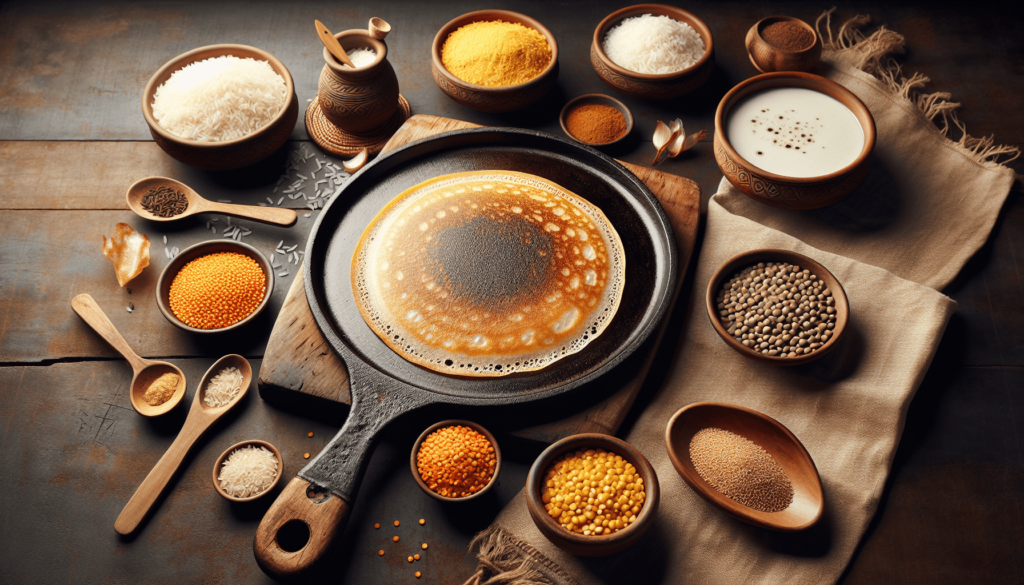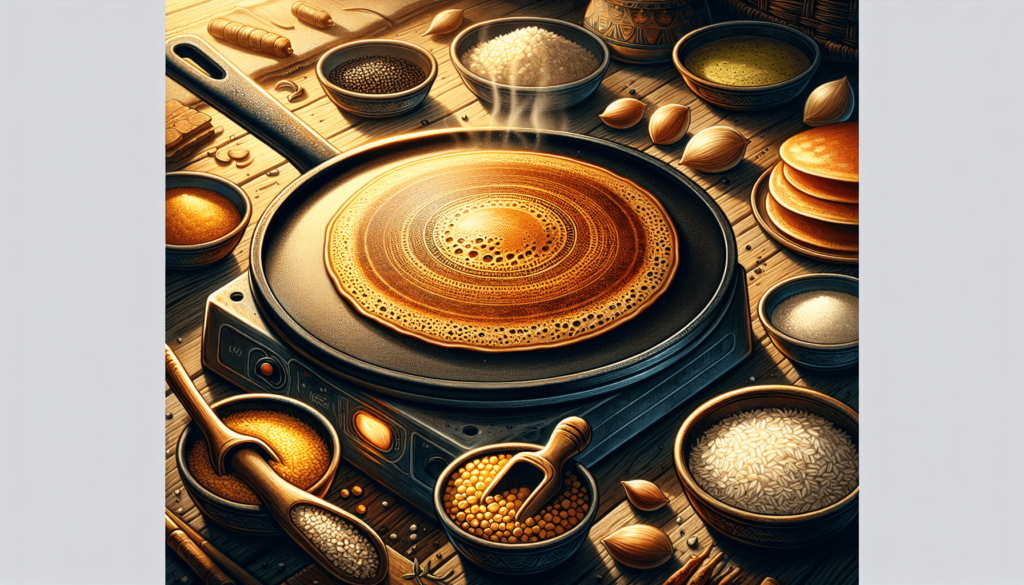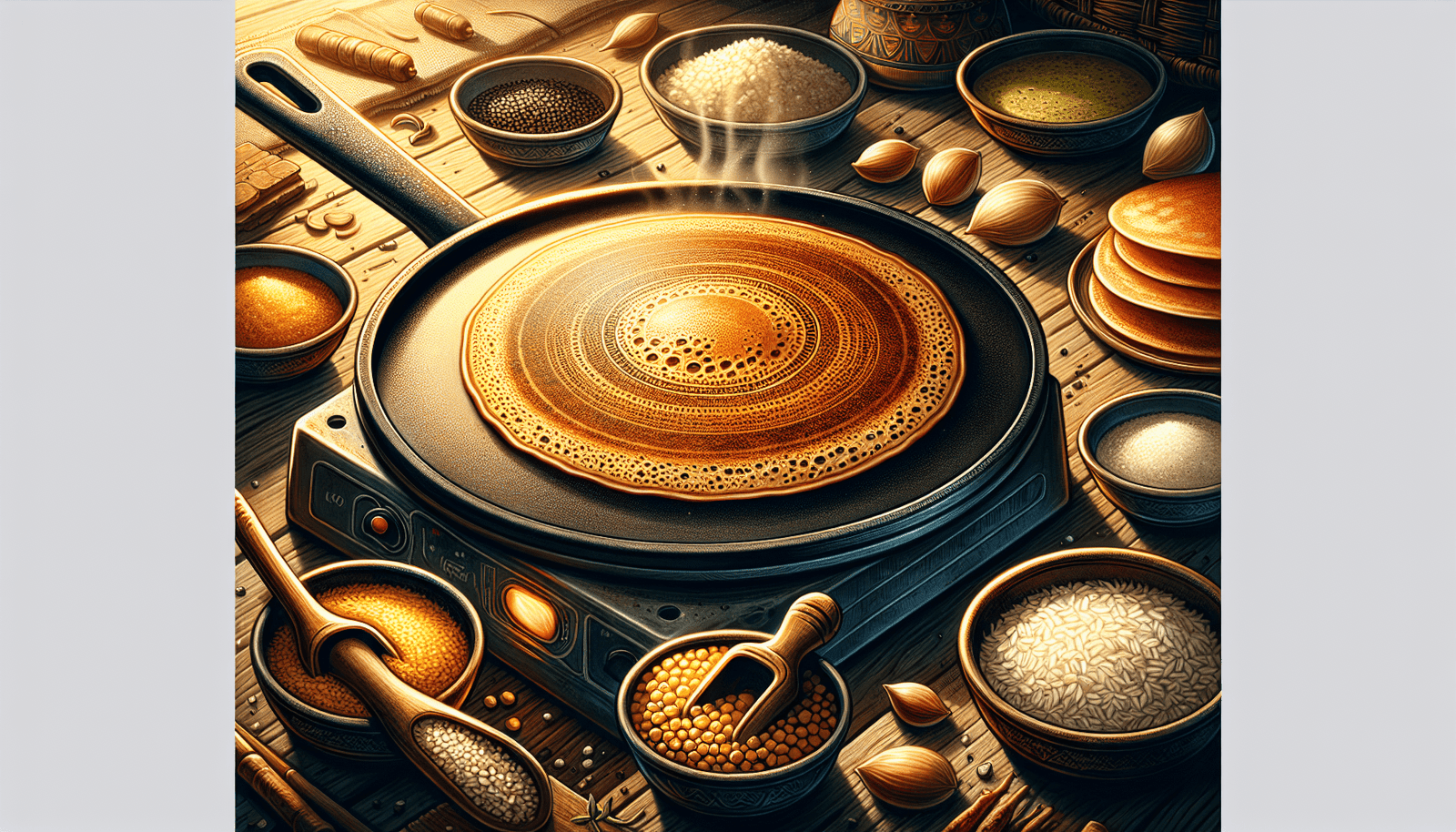Have you ever tasted a perfectly crisp and golden dosa that made you wonder about the secret behind its batter? Dosa is a beloved South Indian dish that has found fans across the globe due to its delicate texture and unique flavor. Crafting the perfect dosa batter is an art that blends tradition with skill. If you’ve been yearning to master this culinary delight, you’re in the right place. Buckle up as we guide you through the step-by-step process of making the perfect dosa batter.
Understanding Dosa
Before diving into the recipe, it helps to understand what makes dosa so special. A dosa is a type of pancake made from fermented rice and black gram batter. It’s thin, crispy, and pairs perfectly with various accompaniments, such as chutneys and sambhar. The magic lies in its batter, which when spread on a hot skillet, transforms into a culinary masterpiece.
What is a Dosa?
Dosas are thin pancakes originating from the Indian subcontinent. Traditionally served as breakfast, they have made their way into lunch and dinner menus too. Unlike many western pancakes, dosas are savory and have a distinctive tangy flavor due to fermentation.
A Brief History of Dosa
Dosas date back to ancient Indian texts, where they were mentioned as staple foods in South India. Over time, varieties evolved, but the traditional ones remain a staple in Indian households. The simple dosa offers not just a taste of history but also embodies the evolution of Indian cuisine.
The Ingredients of the Perfect Dosa Batter
The dosa’s crispiness and flavor depend largely on the ingredients used in the batter. Understanding each component will help you appreciate its role in the recipe as well as guide you to adjust proportions for a personalized taste.
Key Ingredients
-
Rice: Typically, dosa batter is made using raw rice such as sona masuri or ponni, sometimes a mix with parboiled rice. The rice provides the structure and adds to the crispiness.
-
Urad Dal (Black Gram): This pulse contributes to the dosa’s texture and is essential for fermentation. Opt for whole or split urad dal without skins for a classic dosa.
-
Fenugreek Seeds: Added in small amounts, these seeds enhance the batter’s fermenting process and add flavor.
-
Salt: Elevates the taste and helps during the fermentation process.
-
Water: Crucial in blending and adjusting batter consistency.
Optional Ingredients
Depending on preferences and regional traditions, some might add:
- Flattened Rice (Poha): Helps make dosas softer and aids in fermentation.
- Cooked Rice: Some recipes include this to help with crispness and flavor.
Ingredient Proportions
The ratio of rice to urad dal typically varies between 3:1 to 4:1. Here’s a basic guide:
| Ingredient | Measurement |
|---|---|
| Raw rice | 3 cups |
| Urad dal | 1 cup |
| Fenugreek seeds | 1 tsp |
| Salt | To taste |

The Process of Making Dosa Batter
Creating the perfect dosa batter is more than just mixing ingredients; it involves a series of steps that must be followed meticulously. Each stage affects the batter’s quality and the resulting dosa.
Preparing the Ingredients
-
Cleaning: Rinse your rice and urad dal separately in water until the water runs clear. This removes excess starch.
-
Soaking: Immerse each ingredient in ample water. Soak the rice, urad dal, and fenugreek seeds for at least 4-6 hours or overnight. Soaking is crucial for easy grinding and better fermentation.
Grinding the Batter
Once soaked, it’s time to grind!
-
Grinding Urad Dal: Begin with the urad dal and fenugreek seeds. Use a wet grinder or a powerful blender to achieve a smooth, fluffy texture. Add water gradually as needed.
-
Grinding Rice: Next, grind the rice to a slightly gritty consistency. This creates the texture that helps dosas become crispy.
-
Mixing: Combine both ground components in a large bowl. Add some more water and mix thoroughly until everything is integrated.
The Fermentation Process
Fermentation is the critical step that defines the taste and texture of the dosa.
-
Setting Up: Cover the bowl and leave it in a warm place. Depending on the climate, fermentation can take 8 to 12 hours. You’ll know it’s complete when the batter doubles in volume and has a slightly tangy aroma.
-
The Science of Fermentation: This process is a result of lactic acid bacteria that naturally occur. They consume sugars and produce lactic acid, giving the batter its distinctive tang and airy structure.
Adjusting and Storing the Batter
Once fermented, stir the batter gently. Add salt as needed, considering the salt’s role in controlling fermentation if you plan to store the batter.
-
Consistency Check: The batter should be of pouring consistency but not too runny. Add water as required to achieve the desired thickness.
-
Storage: You can store the batter in the fridge for a week. For longer storage, consider freezing.
Cooking the Perfect Dosa
The art of making the perfect dosa extends beyond just the batter. Cooking requires practice and skill but is tremendously rewarding once mastered.
Choosing the Right Pan
The choice of pan or griddle (called a tawa in Indian kitchens) plays a pivotal role in achieving that perfect dosa.
-
Material: A cast-iron tawa, though heavier and requiring maintenance, provides unmatched crispiness. A non-stick pan can work for convenience but may not achieve the same results.
-
Size: Opt for a medium-sized pan for easy spreading and flipping.
Getting the Temperature Right
Temperature is key to making sure the dosa cooks evenly without sticking or burning.
-
Starting Temperature: Heat your pan until medium-hot. A small splash of water should sizzle instantly but evaporate in a few seconds.
-
Maintaining Heat: Modulate the heat between dosas. Cooling the pan with a few sprinkles of water before pouring the next batter helps maintain consistency.
Spreading and Cooking
Your first few attempts might not be perfect, but practice makes perfect.
-
Pouring: Pour a ladle of batter onto the center of the hot tawa.
-
Spreading: Using the back of the ladle, spread the batter in circular motions outward, forming a thin circle.
-
Cooking: Drizzle a little oil around the edges. Cook until golden brown and it begins to release from the pan.
-
Flipping: Optional – some prefer to cook just one side for more crisp and authentic dosa.
-
Serving: Serve hot directly from the tawa for the best experience.

Pairing Your Dosa
What’s a dosa without its accompaniments? Although delicious on its own, dosas are often enjoyed with flavorful chutneys and spicy sambhars.
Chutney Varieties
- Coconut Chutney: Made with fresh coconut, green chilies, and sometimes roasted gram, this is an all-time classic.
- Mint Chutney: Refreshing and spicy, it adds a zesty touch.
- Peanut Chutney: Creamy and rich, perfect for those looking for a nutty flavor.
Sambhar
A lentil-based vegetable stew that is both nutritious and flavorful. It makes a perfect pairing with the dosa and balances the meal.
Fillings and Variations
Consider trying masala dosa, where you place a spicy potato filling at the dosa’s center. Other variations include paneer dosa or even cheese dosa for those craving a fusion twist.
Troubleshooting a Dosa Batter
Even seasoned cooks face issues now and then. Here are a few common problems and solutions:
Batter Not Fermenting
- Check the ambient temperature: Fermentation slows down in colder climates. Consider placing the bowl in the oven with just the light on.
- Change fermentation time: Ensure enough resting time for the batter.
- Experiment with different rice/dal: Fresh ingredients might result in better fermentation.
Dosas Not Coming Out Crispy
- Check texture: Ensure proper proportions and grinding.
- Consistency: A thicker or thinner batter affects the crispiness.
- Pan Temperature: Make sure the pan is hot enough before pouring batter.
Batter Turns Sour
- Reduce fermentation time: If your kitchen is warm, cut short the fermentation process.
- Storage: Always refrigerate the batter once fermented.
The Joy of Cooking Dosa
Achieving the perfect dosa batter is a blend of science, art, and intuition. Every time you make dosas, you learn something new. Celebrate each small success and continue refining your technique. Remember that perfecting dosa batter is as much about the experience as it is about the result. Enjoy the culinary journey one dosa at a time, revel in its flavors, and relish the satisfaction of creating something with your own hands. With patience and practice, you’ll be serving the perfect dosas that you and your loved ones will savor time and time again.
Some of the links on this site are affiliate links, which means I may earn a small commission if you click on them and make a purchase, at no additional cost to you. As an Amazon Associate, I earn from qualifying purchases.



